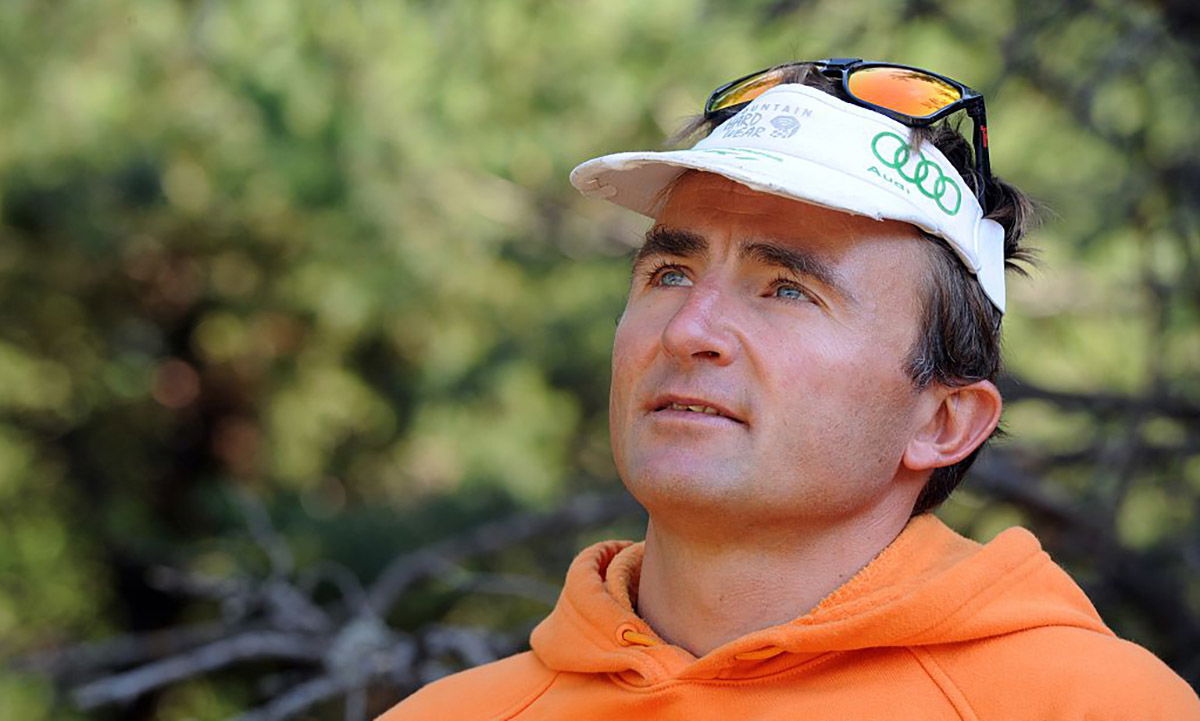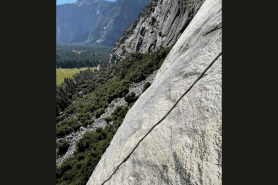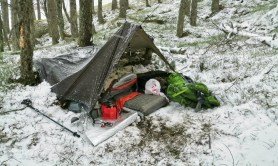

Ueli Steck, who tragically passed away in 2017, was a highly accomplished Swiss mountaineer born in Langnau im Emmental, Switzerland. He was known for his incredible speed and skill in alpine climbing.
Steck specifically made incredible advancements in the world of alpinism, becoming one of the most celebrated and influential climbers of his time. To this day, he is still renowned as one of the greatest pioneers in mountaineering and alpinism.
Mountaineering is the pursuit of climbing mountains and high-altitude peaks with a focus on diverse terrain, while alpinism is more technical and focused on high-altitude climbing, often with difficult, fast, and lightweight approaches.
Here are five things to know about Ueli Steck:
1. He started out a carpenter
Growing up in a small Swiss town, Steck developed a strong connection to the outdoors. Before pursuing a career in mountaineering, Ueli Steck trained as a carpenter. His background in carpentry taught him discipline, attention to detail, and problem solving—all skills applicable to his extreme climbing endeavors.
Steck’s passion for climbing inspired him to shift his focus to mountaineering and alpinism, but his carpentry background continued to influence his climbing career. He was involved in designing and refining climbing equipment and clothing, pushing the boundaries of lightweight and efficient gear for high-altitude ascents.
2. He was nicknamed the “Swiss machine” for his speed and efficiency
Steck was known for his “light and fast” approach to climbing, which emphasized carrying minimal gear to reduce his ecological footprint and increase his speed on climbs. In fact, he held the record for the fastest ascent of the Eiger North Face, Matterhorn, Grandes Jorasses, and Les Drus.
In 2008, Ueli Steck made history by setting an astonishing speed record on the North Face of the Eiger in the Bernese Alps, Switzerland. He climbed the iconic Heckmair Route in 2 hours and 47 minutes, earning him widespread recognition as one of the fastest and most skilled alpine climbers in the world.
In 2009, Steck, along with his climbing partner, Michel Piola, set a speed record on the Colton-MacIntyre Route on the Grandes Jorasses in the Mont Blanc massif, finishing the challenging route in just 2 hours and 21 minutes.
In 2012, Steck, along with his climbing partner, Jon Griffith, also set a speed record on the American Direct route on the Petit Dru, also known as Les Drus, in the Mont Blanc massif, completing the climb in a mere 2 hours and 21 minutes.
Then, in 2015, Steck completed a speed ascent of the Matterhorn Traverse, climbing multiple routes on the Matterhorn, including the Hörnli Ridge and the Zmutt Ridge in one continuous push.
3. He was also a badass rock climber and could climb 5.14b
Many alpinists are specialists and can climb only up to a level that is sufficient for their ascents. Alpine climbs can encompass a wide range of rock climbing grades, but they are typically from around 5.4 (easy) to 5.12+ (difficult).
Rock climbing is a term that refers to the portion of a mountaineering or alpine expedition where climbers ascend rock formations, usually with ropes and protective equipment, emphasizing technique and strength.
Steck was a unique alpinist who took his climbing training seriously and could rock climb at an extremely high level.
The Yosemite Decimal System used to measure rock climbing sport grades starts at 5 and goes only up to 5.15d (elite), so Steck’s level of 5.14b is extremely advanced.
4. He did a lot of his climbs without ropes
Solo climbing is a daring endeavor where athletes climb without any ropes or protective gear, relying solely on their skills and abilities. Steck’s solo climbs were a testament to his unmatched talent, mental fortitude, and deep understanding of the mountains. Solo climbing is an extremely dangerous activity and should only be attempted by highly skilled and experienced climbers.
Ueli Steck’s solo climbs were the epitome of minimalist alpinism, where he pushed his limits in a solitary and intimate communion with the mountains.
One of Steck’s most famous solo climbs was on the Eiger North Face, the very same face he set his speed record on in 2008. In 2015, he made an astonishing solo ascent of the Heckmair Route, completing the climb in 3 hours and 54 minutes.
In 2013, Steck made a daring solo attempt on the South Face of Annapurna, one of the most difficult and dangerous 8,000-meter peaks. He started the ascent without supplemental oxygen, aiming for a fast and lightweight approach. However, due to poor conditions and concerns about avalanches, he wisely decided to abandon the climb and return to Base Camp.
In 2005, Ueli Steck completed a solo ascent of Taweche (6,501 m) in Nepal. While not as well-known as some of his other solo climbs, Taweche is a technical challenge in the Himalayas.
5. He was given the Piolets d’Or award twice
The Piolet d’Or is an annual mountaineering award presented to climbers for outstanding achievements in alpinism, recognizing remarkable ascents and contributions to the climbing community.
Steck received this honor twice, once for his solo on the south face of Annapurna in 2014, and again in 2009 for his first alpine-style ascent of the north face of Tengkampoche in Nepal’s Khumbu Valley, alongside Simon Anthamatten.
There are only four people who have been given the Piolets d’Or award twice: Alex Honnold from the U.S., Catherine Destivelle from France, Denis Urubko from Kazakhstan, and Ueli Steck.









